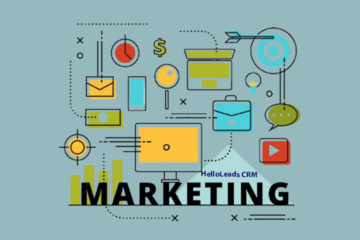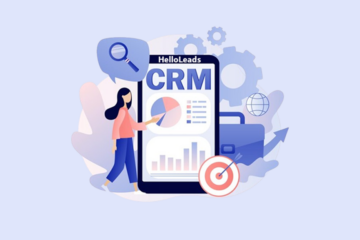
The most reliable way to forecast the future is to try to understand the present. – John Naisbitt
How much additional revenue do we expect in next 3 years by entering new markets with selected new products?
Do we need to add more sales team members to achieve our sales goals?
Do we need to enhance our product range to target new customers and to meet our business goals?
These are some of the questions every entrepreneur, sales managers and sales executives often ask. Sales play a key role in the success of any business and having an idea of future sales can help you to make right decisions.
Whether you are a small business or a Fortune 500 company, sales forecasting is an essential aspect of running a successful business. An accurate sales forecasting can help you to take the necessary steps towards growth.
In this small-business guide, we will walk you through the importance of sales forecasting and effective methods to forecast your sales. But, before we jump into that, let’s see what is sales forecasting in detail and its importance.
What is sales forecasting?

Sales forecasting is the process of estimating future sales. It gives insights into what could be future sales, how a company should organize its workforce, cash flows, and other resources. Sales forecasting allows you to make informed decisions. Forecasting can be done based on past sales data, industry-wide comparisons, and economic trends.
Sales forecasting allows you to set goals, allocate resources, avoid shortfalls, and make smart decisions for the future of your company. It helps in overall business planning, budgeting, and risk management.
Sales forecasting also helps businesses to get a clear look at the financial health and helps you in deciding how to move forward.
Sales forecasting methods
There are different methods available to forecast sales. But, to get an accurate sales forecast, the following sales forecasting methods are very effective and will provide the most accurate predictions.
1. Opportunity stage forecasting
Of all the forecasting methods, the opportunity stage forecasting method is one of the most popular ones. This method considers different stages of your sales pipeline and predicts which opportunities are likely to become customers based on which stage your lead is in. A lead who is further along in the pipeline, the more likely they are to become a customer.
Each stage has a probability and an opportunity in the initial stage might have a probability of closing of 10%, while an opportunity in a later stage like negotiations has a probability of closing around 90%.
To get a sales forecast, you can multiply the opportunities potential value or size by the probability of opportunities’ in that stage.
For instance,
It is possible you have considered the following probability of closing for your pipeline stages: Initial Call: 5%; Qualified: 10%; Product Demo: 50%; Product Trial: 70%; Final Call: 80%; Deal Closed: 100%
According to this forecasting method, an opportunity with a potential value of $300 at the product trial stage is 70% likely to close. The forecasted amount for this deal would be $210. If you, in the same way, aggregate all sales deals, you will have forecast of the future sales.
2. Length of sales cycle forecasting

This method uses data to predict how long a lead typically takes to convert into a paying customer. Let’s say, your average sales cycle is four months from the first contact with the lead to closing the deal. When a deal has been under negotiation for two months, then your forecast might suggest a 50% chance of success.
The sales cycle forecasting can be applied to a large number of sales cycles depending on the source. For example, a referral client might take four weeks, and leads coming from conferences might require six months to convert. All these lead types can be grouped to get a clear forecast.
This method is advantageous for companies who track how and when prospects enter the sales pipeline. You can use a CRM system to avoid manual tasks that might cause errors and might slow down your work.
3. Intuitive forecasting
As the name implies, intuitive forecasting relies on the salesperson’s understanding about of prospects and pipeline customers. Salespersons use their experience and intuition to predict the probability of closing a deal.
This method can be used by early-stage start-ups or companies without any historical data.
4. Historical forecasting
As the name implies, historical forecasting uses past data to predict how much you’re going to sell in the next month or quarter or next year and assume that you’ll generate the same or better results.
You can also use your historical sales growth during the historical forecast. For example, your team collectively sold $50,000 as monthly recurring revenue (MRR) in October. And last year you had 2% increase every month. Based on this method, you can assume they would sell $50,000 + 2% that is $51,000 in November.
5. Multivariable analysis forecasting
Multivariable analysis forecasting is one of the most accurate forecasting methods as it combines factors of multiple forecasting methods such as sales cycle length and opportunity stage forecasting.
This method highly relies on data and thus provides an accurate sales forecast. However, this method requires an advanced analytics tool for the purpose of analysis and forecasting
6. Pipeline forecasting
Pipeline forecasting is the process of forecasting from a business sales pipeline. This method involves adding up the value of all the current opportunities in your sales pipeline based on several variables that are unique to your team’s performance.
This method is one of the easiest and accurate ways to forecast sales as it depends on the data in your CRM.
How do I get started with sales forecasting?
1. Define your sales process
Have a defined sales process that acts as a roadmap for your sales team to turn potential leads into paying customers. Having a sales process can bring value to your business in many ways including increasing clarity, improving your team’s efficiency, increased revenue and consistent improvement.
It shows a clear path for the sales team to follow and gives them much more consistency in winning deals.
2. Set targets for your team

Ensure every individual and team have targets set on a weekly/ monthly basis. Having a sales target also makes it easier for you to make an action plan to achieve it. It also provides direction to your sales team as they will know how close or how far they are to meeting their sales target.
3. Use a comprehensive CRM
Providing a CRM to the team helps the sales team to accurately predict future sales growth based on their pipeline of potential deals.
Using an effective CRM can provide many benefits ranging from fine-tuning sales team’s selling strategy and making informed decisions on how a team should manage its resources.
4. Choose the right sales forecasting method
Selecting a suitable forecasting method depends on many factors such as the age of your business, historical data and size of your pipeline.
If your business is new, the best method for you would be intuitive forecasting. If you are looking for more detailed pipeline-specific forecasting, multivariable analysis forecasting and pipeline forecasting are the better options.
5. Make your team accountable

Keep your sales team informed about the key business decisions and sales strategies. Get regular feedback from your team and make them accountable for their performance.
Final Notes
Sales forecasting is an essential tool that all businesses should use to know their customers and market. An accurate sales forecasting report can help you to make informed decisions and plan your sales strategy.
Run your sales forecasting today to achieve maximized business growth.
Share this blog :










